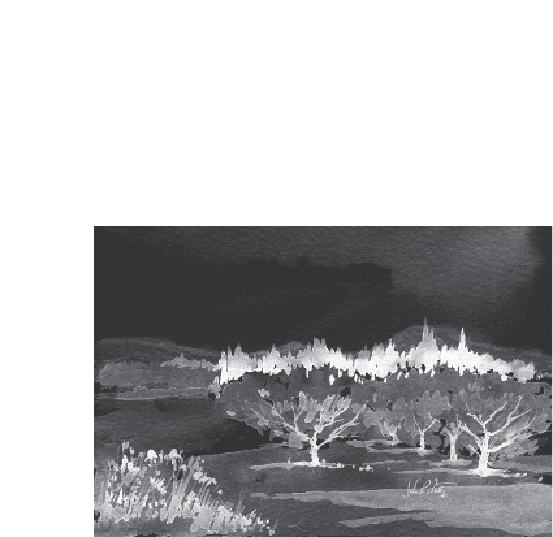Agriculture Reference
In-Depth Information
Chapter 5
Only Reconnect
Such Great Success. . .
Let me take you for a summer's walk through one of today's temperate
wheat fields. As we tread carefully, pushing through the stiff, golden stalks,
nothing seems to stir. Between each plant the soil is bare and hard. On
the horizon, a smudge of green suggests a field boundary, perhaps a distant
hedgerow or lonely tree. We are now standing on a factory floor, at the
centre of an efficient machine that does little else but produce food. Like
any factory, it does a job well, but it has no place for nature. The same
goes for most animal raising. In North America, cattle once spent their
whole lives roaming the prairies. But today, they are packed into feedlots,
as many as 100,000 animals at a time. They are efficiently fed, put on 1
kilogramme or more of meat each day, and together produce wastes
equivalent to those from a sizeable city. These, too, are food factories, and
many say they represent great progress in efficient food production. But
is this true?
















Search WWH ::

Custom Search